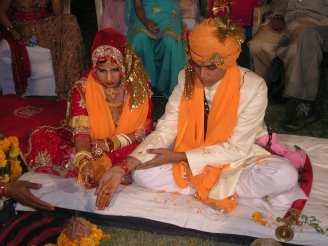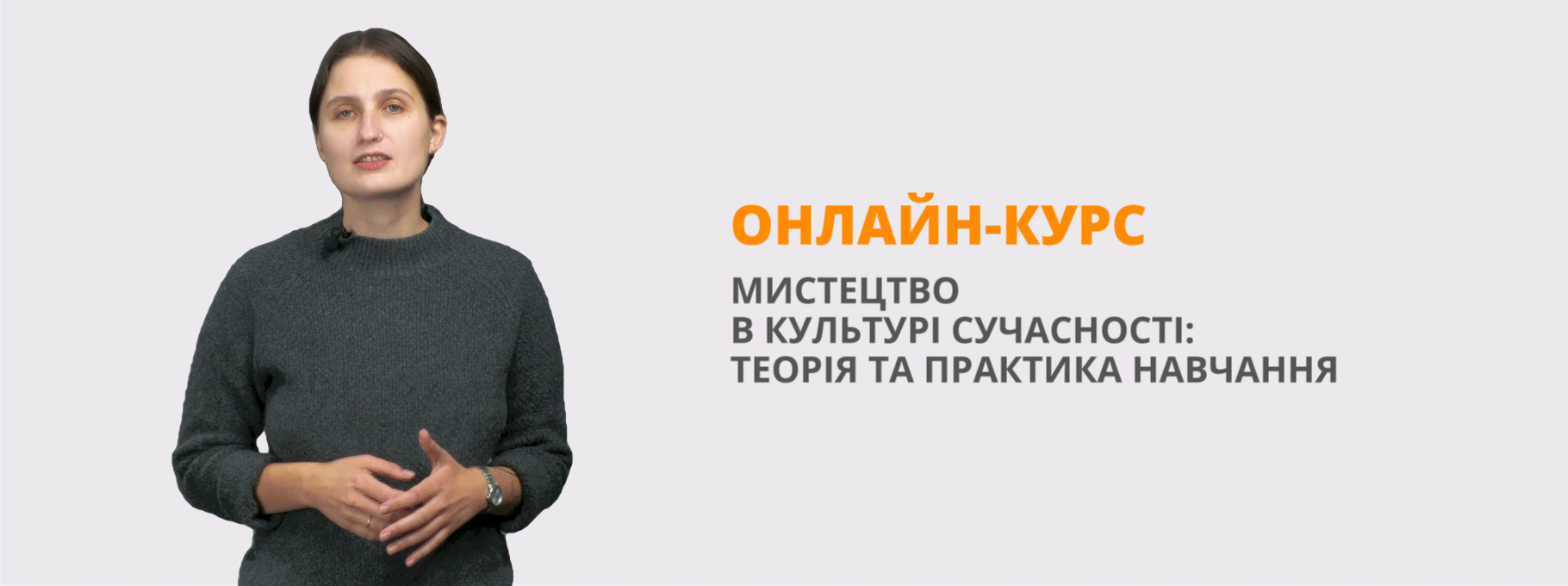Урок " Весільні традиції народів світу. "

TRADITIONS AND CELEBRATIONS
OF THE WEDDING IN THE WORLD
TRADITIONS AND CELEBRATIONS OF THE WEDDING IN THE WORLD
Natalya Halamaga,
a teacher,
Physics and Mathematics
Lyceum,
L’viv
Objectives:
- to develop communicative skills using active lexis on the topic;
- to make students more aware of the subject under discussion;
- to develop their fluency in the language;
- to get them to know how to use existing knowledge;
- to focus students’ attention on specific words and word combinations;
- to teach students to respect the traditions of the different peoples of the world;
- To encourage the students to guess meanings of new words using pictures.
Vocabulary:
a best man – the man who helps the groom;
a bridesmaid – the woman who helps the bride;
a groom – the man getting married;
a bride – the woman getting married;
a guest – an invited person;
parents- in –law – the parents of your husband or wife;
a father- in-law – the father of your husband or wife;
a daughter-in-law – your son’s wife;
a son-in-law – the husband of your daughter;
a couple – two people who are married.
Equipment: the wedding pictures, the handouts with the puzzle, a tape recorder.
PROCEDURE
1. INTRODUCTION
Greetings, informing about the title of the lesson and main directions of work during the lesson.
2. WARMING-UP
The teacher asks the students to answer some questions.
Do your families celebrate any special occasions?
What is your favorite event to celebrate?
What special occasions are celebrated in your country?
3. MAIN PART
1. Vocabulary presentation. The game “Find the words”.
The teacher asks the students to watch the slide show of the wedding pictures and guess the words. The first letters of the words are written on the blackboard.
1. b--- ---, 2.b--------, 3.g----, 4.b----, 5.g-----, 6.p------ - ---, 7.c-----, 8.s-- - ---
a best man – the man who helps the groom;
a bridesmaid – the woman who helps the bride;
a groom – the man getting married;
a bride – the woman getting married;
a guest – an invited person;
parents- in –law – the parents of your husband or wife;
a father- in-law – the father of your husband or wife;
a daughter-in-law – your son’s wife;
a son-in-law – the husband of your daughter;
a couple – two people who are married.
Expected answer:
The teacher divides the students into two teams and distributes the handouts with the puzzle. The students have to find the words connecting with the wedding.
The puzzle” Wedding”
|
B |
R |
I |
D |
E |
C |
O |
U |
P |
L |
E |
K |
L |
C |
B |
|
H |
T |
S |
N |
F |
H |
T |
E |
U |
Q |
U |
O |
B |
E |
R |
|
O |
J |
T |
R |
V |
N |
O |
I |
T |
P |
E |
C |
E |
R |
I |
|
N |
W |
E |
D |
D |
I |
N |
G |
D |
R |
E |
S |
S |
E |
D |
|
E |
G |
O |
A |
E |
C |
T |
T |
D |
W |
O |
P |
T |
M |
A |
|
Y |
U |
S |
E |
L |
D |
N |
A |
C |
F |
H |
E |
M |
O |
L |
|
M |
E |
M |
S |
M |
E |
N |
O |
T |
C |
D |
E |
A |
N |
V |
|
O |
S |
O |
Z |
S |
C |
Y |
D |
R |
I |
X |
C |
N |
Y |
E |
|
O |
T |
O |
E |
I |
U |
R |
U |
D |
S |
O |
H |
S |
M |
I |
|
N |
S |
R |
N |
V |
I |
N |
R |
D |
U |
B |
N |
J |
A |
L |
|
O |
P |
G |
S |
N |
C |
A |
K |
E |
M |
U |
E |
I |
N |
S |
|
W |
L |
M |
K |
V |
C |
H |
A |
M |
P |
A |
G |
N |
E |
C |
Expected answers: wedding dress, best man, bridesmaid, bouquet, invitation, champagne, soft drink, dancing, candles, reception, speech, church, present, groom, bride, music, cards, cake, guests, ceremony, honeymoon, bridal veil.
2. Vocabulary practice.
The teacher shows the wedding photos and the students should make sentences using the vocabulary. 

Expected answer:
The best man was dressed in a black suit and a tie.
The bridesmaids were wearing long red silk dresses and were holding small bouquets of white roses.
The bride was wearing a long white dress.
3. Listening “Chinese wedding”.
Pre-listening.
The teacher asks the students to read the text and try to guess the correct answers.
Chinese wedding
Last Saturday, I attended a Chinese wedding in a 1) church/temple. My friend Chang had given me the invitation in a 2) red/blue envelope. A Chinese wedding involves many preparations. A lucky 3) hour/date for the wedding had to be chosen. The temple and the restaurant were booked in advance. A 4) roast beef/roast pig had been sent to the 5) bride/groom a month before. On the big day the bride was wearing a long, traditional red 6) cotton/ silk dress. Chang looked very handsome in his 7) black/white jacket.
At the reception, the bride and groom served 8) champagne/tea to the guests. In return, everyone gave them lucky red envelopes containing money or 9) gold/ silver.
We then sat down to a delicious 10) meal/feast which lasted for four hours. When we had finished eating, children lit indoor 11) candles/fireworks, music was played and we danced until the 12) early/late hours of the morning. I felt very 13) excited/lucky to have attended such a traditional event.
While-listening.
The students listen to the tape and underline the correct word.
Expected answer: 1.temple, 2.red, 3.date, 4.roast pig, 5.bride, 6.silk, 7.black, 8.tea, 9.gold, 10.meal, 11.fireworks, 12, early, 13.lucky.
Post-listening.
The teacher asks the students to compare a Chinese wedding with a typical wedding in Ukraine. The students have to fill in the table which is on the blackboard.
|
|
Chinese wedding |
Your country’s wedding |
|
|
Preparations |
|
|
|
|
Actual event/activities |
|
|
|
|
Feeling/comments |
|
|
|
Expected answers:
|
|
Chinese wedding |
Your country’s wedding |
|
|
Preparations |
invitations in red envelopes; lucky date for wedding has to be chosen; temple and restaurant are booked; roast pig sent to the bride a month before wedding. |
the engagement takes place a month before wedding; date for wedding has to be chosen; restaurant is booked; the invitations are sent. |
|
|
Actual event/activities |
temple decorated with flowers; bride wears long red silk dress; groom wears black jacket; bride and groom serve tea to guests at reception; guests give couple red envelopes containing money or gold; delicious meal; children light indoor fireworks; dance. |
groom wears black suit; bride wears long white dress and a veil; the groom, bride with the best men and bridesmaids, family, friends go to church for the wedding service; they are joined in matrimony by the clergyman; the clergyman slips a wedding-ring on the bride’s ring finger; delicious meal with the highly decorated “wedding came”; guests give couple envelopes containing money; dance; at the end of the ceremony bride puts on a kerchief with red tassels on her head to show that she is married; the happy couple departs on their honey moon. |
|
|
Feeling/comments |
lucky to have attended this event. |
|
|
4. Reading.
The teacher asks the students to read the texts about the wedding customs in different countries.
MUSLIM WEDDING
On the eve of the wedding, the bride’s hands and feet are painted by her female relatives using henna dye. The ceremony can be conducted by any knowledgeable Muslim male, but an Imam usually leads it. Muslim men can marry Muslims or Christians; the women can marry only Muslims.
The wedding begins at 9.00 in the evening and goes on until about 4.00 in the morning. The bride usually wears a white dress and the groom a long white robe. During the ceremony the men and women are in separate rooms and sit or dance or listen to singing. After the ceremony, the guests are given a meal and at some weddings, they receive a gift

HINDU WEDDING
The wedding usually takes place in a hall where a canopy filled with flowers is set up by the bride’s family. The bride arrives first in a red, green or white silk sari, with her friends and family. Then she is hidden away while everyone goes out to welcome the groom and his friends and relatives. Lights are waved over his head as he is taken under the canopy and the bride is brought to join him. The ceremony is followed by a meal for all the guests.
ORTHODOX JEWISH WEDDING
Before the ceremony the groom inspects the veiled bride in a separate room to make sure she is the woman he plans to marry. The wedding is then held under a canopy supported by four poles. Only the groom speaks during the ceremony, and wine is passed among family members. The groom then stamps on a glass and everyone wishes the couple good luck. Some couples go on honeymoon, but at a traditional wedding, the bride and groom are entertained at a party given by a different friend or relative every night for seven nights.
The teacher asks the students to discuss in groups which custom from all the wedding ones they have read is the most attractive.
5. Writing.
The teacher asks the students to look at the following list of preparations and make sentences using Causative form.
|
Already |
Now |
Within the week |
|
print invitations |
send out invitations |
send flowers to hotel |
|
book reception |
arrange flowers |
decorate reception hall |
|
deliver John’s suit |
make wedding cake |
hire limousine |
|
make Susan’s dress |
|
|
|
|
|
|
Expected answer:
1. They have had the invitations printed.
2. They have had John’s suit delivered.
3. They have had Susan’s dress designed.
4. They are having the invitations sent out.
5. They are having the wedding cake made.
6. They are having the flowers arranged.
7. They will have the flowers sent to the hotel.
8. They will have the reception hall decorated.
9. They will have a limousine hired.
5. Discussion “The wedding Superstitions”.
The teacher asks the students to read the superstitions connected with the wedding. The students should say which ones bring bad or good luck. They are supposed to discuss the superstitions which they know about. They work in teams.
The list of wedding superstitions:
- sharing the cake with family and friends spreads fertility and prosperity;
- a taste of the cake before the wedding means loss of the husband’s love;
- a piece of cake kept after the big day ensures his fidelity;
- the newly weds must cut the first slice together and every guest must eat a small piece to ensure that the happy couples are blessed with children;
- the newly weds get pelted at the moment of leaving the room with handfuls of rice or with old shoes and slippers which is supposed to bring them good luck.
4. CONCLUSION
The teacher emphasizes that they should respect the customs of each country.
The students have to make project about the wedding traditions in their families.
References:
1. Virginia Evans. Jenny Dooley. Enterprise 4. Express Publishing, 1997. pg. 60.
2. Danuta Gryca. Danica Gondova. Exam Excellence. Oxford University Press, 2006.


про публікацію авторської розробки
Додати розробку
